Discover the beauty and diversity of British garden birds with our comprehensive guide. Learn to identify and attract 15 common feathered friends, from robins to blue tits, with expert tips on feeding, nesting, and creating a bird-friendly environment.
There’s something truly special about waking up to the melodic songs of birds in your backyard. Britain is home to a diverse array of feathered friends, and many of them can be found right in your garden if you know what to look for. In this article, we’ll introduce you to 15 common British birds that may visit your outdoor space, along with tips on how to attract and care for them.
1. Robin

Here’s a concise information chart about the robin bird:
| Feature | Description |
|---|---|
| Common Name | Robin |
| Scientific Name | European Robin: Erithacus rubecula <br> American Robin: Turdus migratorius |
| Family | European Robin: Muscicapidae <br> American Robin: Turdidae |
| Habitat | European Robin: Woodlands, gardens, parks <br> American Robin: Forests, urban areas, gardens |
| Range | European Robin: Europe, Western Asia <br> American Robin: North America |
| Size | European Robin: 12.5-14 cm (5-5.5 inches) <br> American Robin: 23-28 cm (9-11 inches) |
| Weight | European Robin: 16-22 grams (0.6-0.8 ounces) <br> American Robin: 77-85 grams (2.7-3.0 ounces) |
| Plumage | European Robin: Orange-red face and breast, brown upperparts <br> American Robin: Orange-red breast, gray-brown upperparts |
| Diet | Insects, worms, berries, fruit |
| Lifespan | Typically 2 years, can live up to 5 years or more |
| Behavior | Territorial, known for melodious singing |
| Breeding Season | Spring and summer |
| Nesting | Builds nests in trees, shrubs, or on buildings |
| Clutch Size | 3-5 eggs per brood |
| Conservation Status | Least Concern |
The robin is perhaps one of the most recognizable and beloved garden birds in Britain. With its bright red breast, brown back, and cheerful song, it’s a welcome sight in any backyard. Robins are particularly fond of feeding on the ground, so placing bird feeders or scattered seeds at ground level will attract them.
2. Blackbird
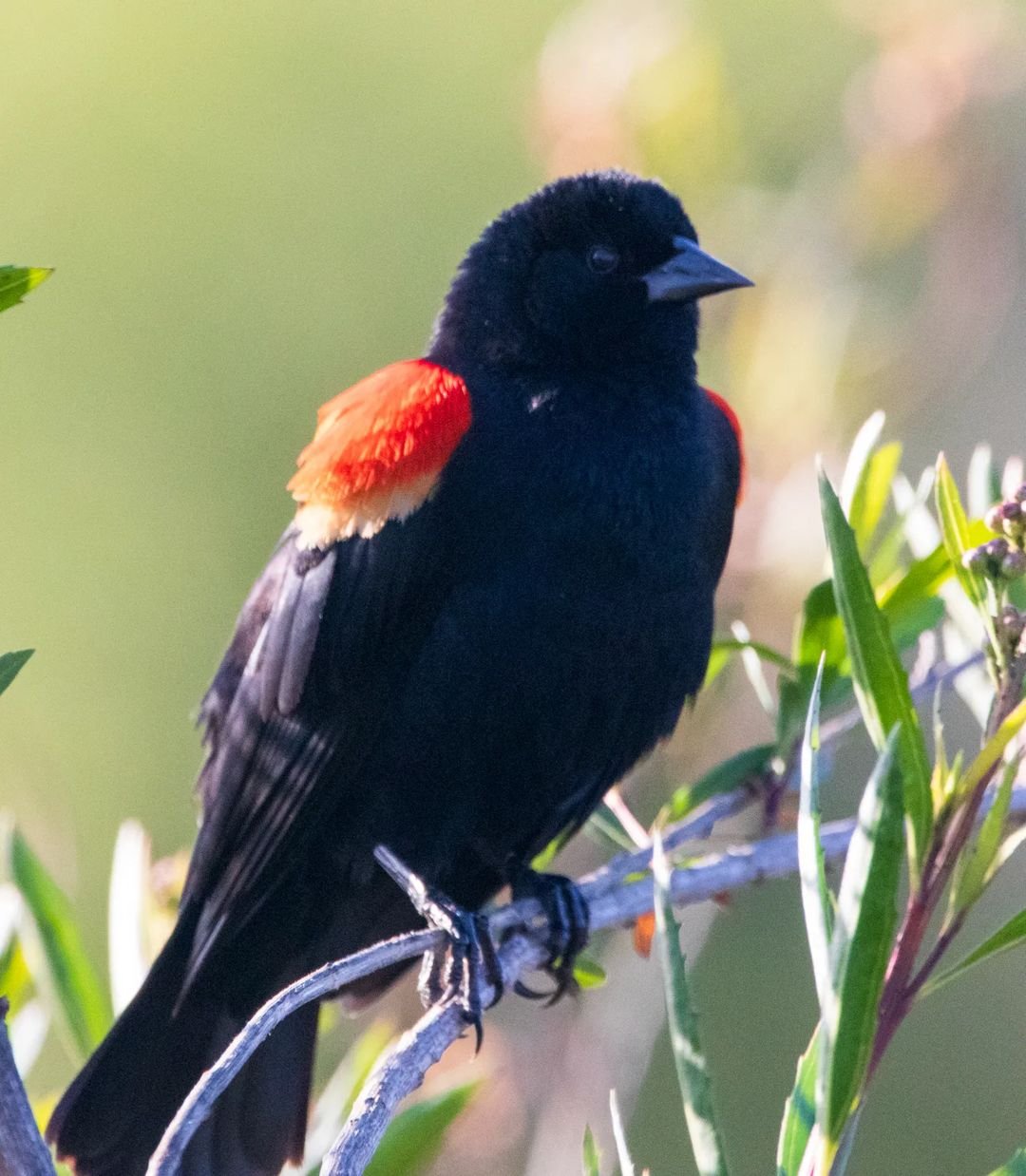
Here’s a concise information chart about the blackbird:
| Feature | Description |
|---|---|
| Common Name | Blackbird |
| Scientific Name | Common Blackbird: Turdus merula |
| Family | Turdidae |
| Habitat | Woodlands, gardens, parks, urban areas |
| Range | Europe, Asia, North Africa |
| Size | 23-29 cm (9-11 inches) |
| Weight | 80-125 grams (2.8-4.4 ounces) |
| Plumage | Male: All black with yellow-orange beak and eye ring <br> Female: Dark brown with mottled breast |
| Diet | Insects, worms, fruits, berries |
| Lifespan | Up to 5 years in the wild |
| Behavior | Territorial, often heard singing from perches |
| Breeding Season | Spring and summer, builds cup-shaped nests |
| Clutch Size | 3-5 eggs per brood |
| Conservation Status | Least Concern |
The blackbird is a striking bird with its glossy black plumage and bright yellow beak. Both male and female blackbirds frequent gardens, where they can often be seen foraging for worms, insects, and berries. Providing a shallow bird bath or water source will attract these beautiful songbirds.
3. Blue Tit
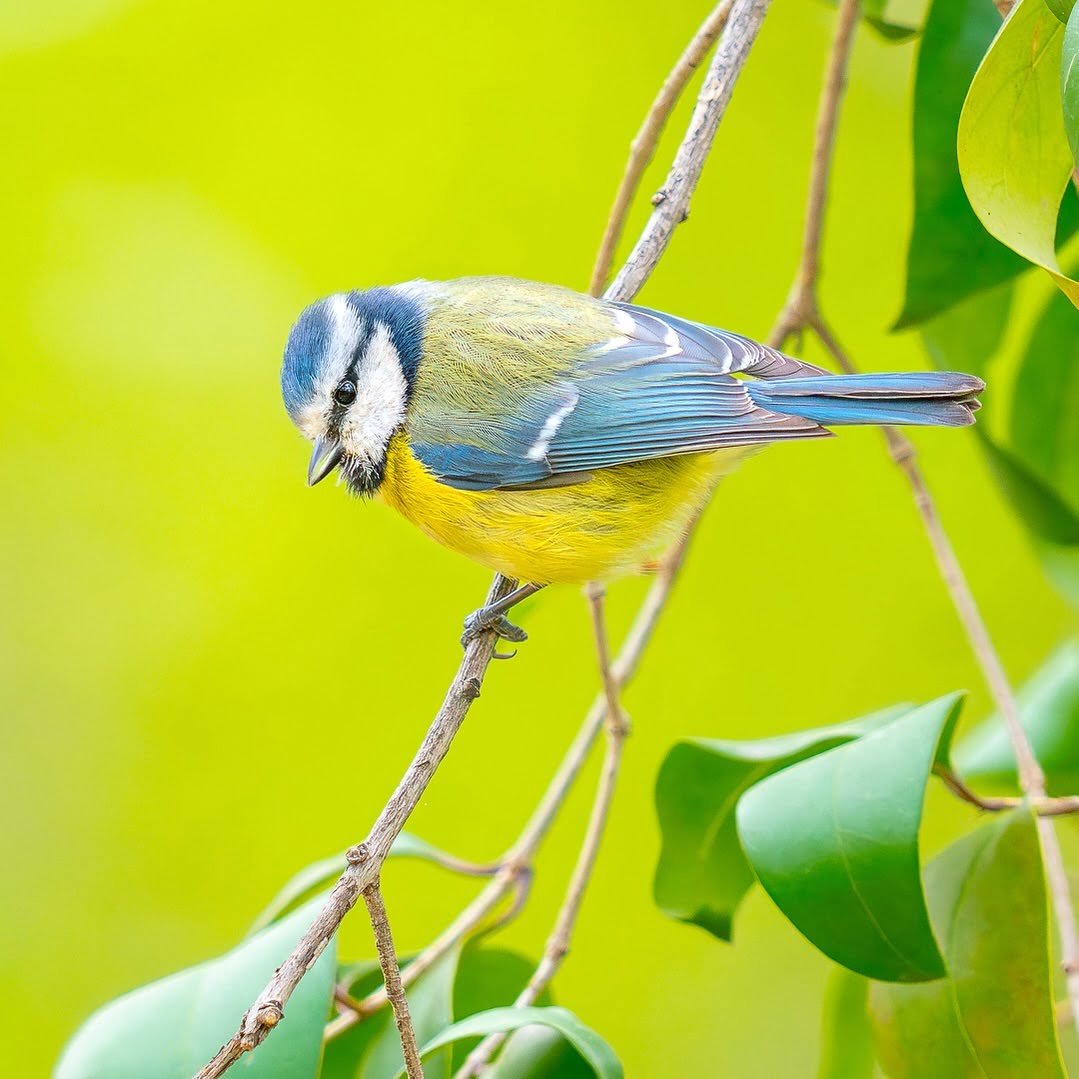
Here’s a concise information chart about the Blue Tit bird:
| Feature | Description |
|---|---|
| Common Name | Blue Tit |
| Scientific Name | Cyanistes caeruleus (formerly Parus caeruleus) |
| Family | Paridae |
| Habitat | Woodlands, gardens, parks, urban areas |
| Range | Europe, Asia, North Africa |
| Size | 10-12 cm (3.9-4.7 inches) |
| Weight | 9-12 grams (0.32-0.42 ounces) |
| Plumage | Bright blue and yellow with white cheeks and black stripe through the eye |
| Diet | Insects, spiders, seeds, nuts, berries |
| Lifespan | Up to 3 years in the wild, but can live longer in captivity |
| Behavior | Agile, acrobatic foragers, often seen hanging upside down while feeding |
| Breeding Season | Spring and summer |
| Nesting | Builds nests in tree holes, nest boxes, or crevices |
| Clutch Size | 7-13 eggs per brood |
| Conservation Status | Least Concern |
The blue tit is a small, acrobatic bird with a bright blue cap, yellow breast, and distinctive blue-grey wings. They are frequent visitors to garden bird feeders, particularly those stocked with peanuts, seeds, and fat balls. Putting up nest boxes can also encourage blue tits to breed in your garden.
4. Great Tit

Here’s a concise information chart about the Great Tit bird:
| Feature | Description |
|---|---|
| Common Name | Great Tit |
| Scientific Name | Parus major |
| Family | Paridae |
| Habitat | Woodlands, gardens, parks, urban areas |
| Range | Europe, Asia, North Africa |
| Size | 12-14 cm (4.7-5.5 inches) |
| Weight | 16-21 grams (0.56-0.74 ounces) |
| Plumage | Distinctive black head with white cheeks, yellow breast with black stripe down the middle |
| Diet | Insects, seeds, nuts, berries, small fruits |
| Lifespan | Up to 3 years in the wild, but can live longer in captivity |
| Behavior | Agile, acrobatic foragers, often seen hanging upside down while feeding |
| Breeding Season | Spring and summer |
| Nesting | Builds nests in tree holes, nest boxes, or crevices |
| Clutch Size | 7-13 eggs per brood |
| Conservation Status | Least Concern |
Similar in appearance to the blue tit but slightly larger, the great tit is another common garden visitor. These birds are known for their black crowns, yellow cheeks, and greenish-blue backs. They are particularly fond of sunflower seeds and suet feeders.
5. House Sparrow

Here’s a concise information chart about the House Sparrow:
| Feature | Description |
|---|---|
| Common Name | House Sparrow |
| Scientific Name | Passer domesticus |
| Family | Passeridae |
| Habitat | Urban areas, parks, gardens, agricultural areas |
| Range | Worldwide, originally from Europe, Asia, and North Africa |
| Size | 14-16 cm (5.5-6.3 inches) |
| Weight | 24-39 grams (0.85-1.4 ounces) |
| Plumage | Males: Gray crown, black bib, chestnut nape, and white cheeks <br> Females: Duller colors with buffy eyebrow stripe |
| Diet | Seeds, grains, insects, scraps |
| Lifespan | Typically 3 years, can live up to 10 years or more in captivity |
| Behavior | Social, often found in large flocks, noisy chirping |
| Breeding Season | Spring and summer, may breed multiple times per year |
| Nesting | Builds cup-shaped nests in cavities, ledges, or nest boxes |
| Clutch Size | 3-5 eggs per brood |
| Conservation Status | Least Concern |
Despite their name, house sparrows are not just found near human habitations. These sociable little birds with their chestnut-brown backs and grey crowns can often be seen in gardens, especially where there are bird feeders or areas of dense vegetation for nesting.
6. Starling
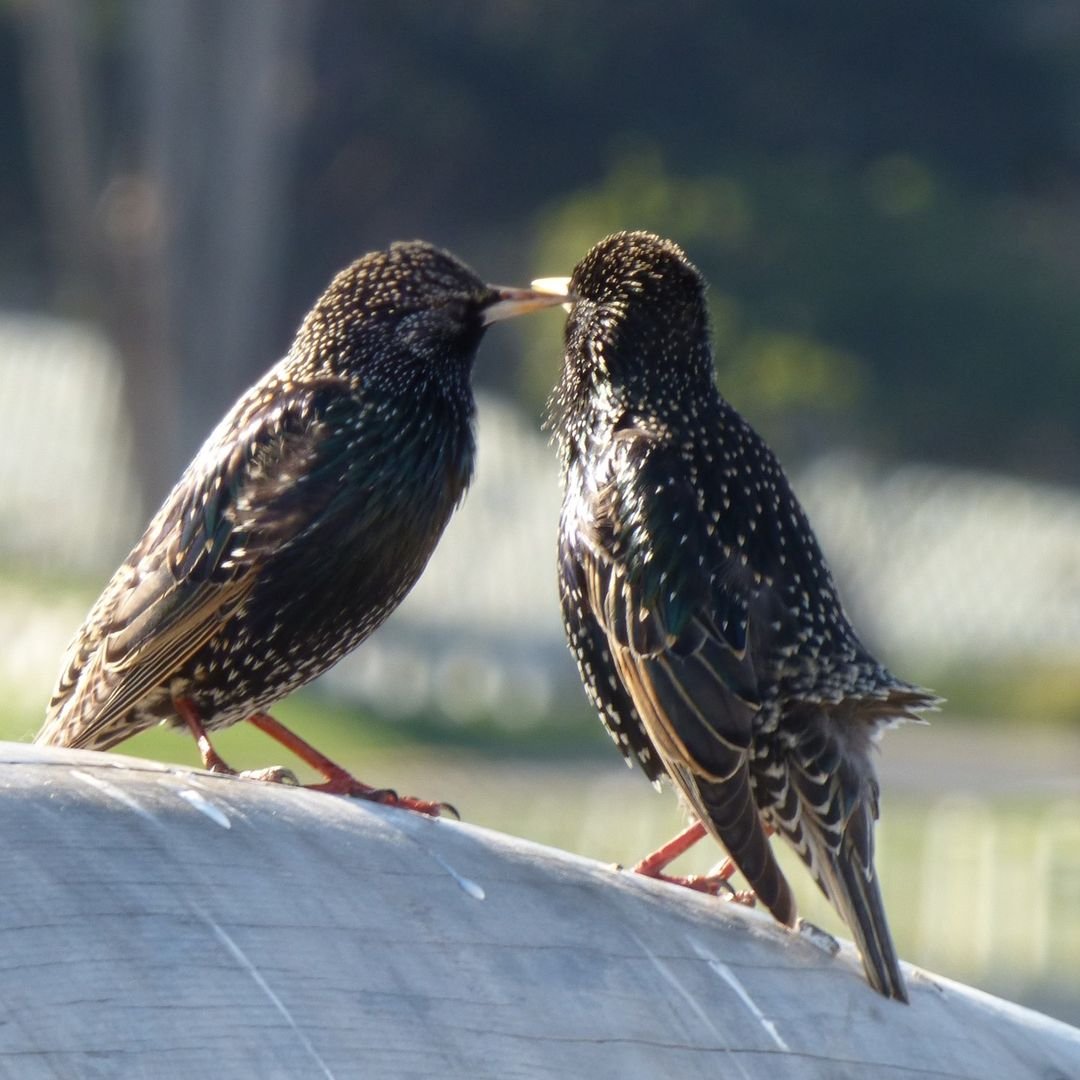
Here’s a concise information chart about the Starling bird:
| Feature | Description |
|---|---|
| Common Name | Starling |
| Scientific Name | Sturnus vulgaris |
| Family | Sturnidae |
| Habitat | Urban areas, agricultural land, grasslands, open woodlands |
| Range | Native to Eurasia, introduced to North America, Australia, and other regions |
| Size | 19-23 cm (7.5-9 inches) |
| Weight | 60-90 grams (2.1-3.2 ounces) |
| Plumage | Glossy black with iridescent green and purple sheen in sunlight, white spots in winter |
| Diet | Insects, fruits, seeds, grains, garbage |
| Lifespan | Up to 15 years in the wild |
| Behavior | Highly social, known for murmurations (large flocking behavior), mimicry of other birds’ calls |
| Breeding Season | Spring and summer, may breed in colonies |
| Nesting | Builds nests in tree holes, buildings, nest boxes |
| Clutch Size | 4-6 eggs per brood |
| Conservation Status | Least Concern |
Starlings may not be as colorful as some other garden birds, but their iridescent plumage and unique chirping calls make them a delightful addition to any backyard. They are ground-feeders and will happily forage for insects, seeds, and fruit in your garden.
7. Goldfinch

Here’s a concise information chart about the Goldfinch bird:
| Feature | Description |
|---|---|
| Common Name | Goldfinch |
| Scientific Name | Carduelis carduelis |
| Family | Fringillidae |
| Habitat | Open woodlands, meadows, gardens, parks |
| Range | Europe, North Africa, Asia |
| Size | 11-13 cm (4.3-5.1 inches) |
| Weight | 14-19 grams (0.5-0.7 ounces) |
| Plumage | Bright yellow body, black and white wings with distinctive black cap and red face in males |
| Diet | Seeds, especially thistle and dandelion seeds, also insects during breeding season |
| Lifespan | Typically 2-3 years, up to 10 years in captivity |
| Behavior | Social, often seen in small flocks, acrobatic flyers |
| Breeding Season | Late spring to summer |
| Nesting | Builds cup-shaped nests in trees or shrubs |
| Clutch Size | 4-6 eggs per brood |
| Conservation Status | Least Concern |
With their vibrant red faces, bright yellow wing bars, and melodious twittering, goldfinches are a true delight to have in your garden. They are particularly attracted to nyjer seed feeders and enjoy feeding on thistles, dandelions, and other seeding plants.
8. Chaffinch

Here’s a concise information chart about the Chaffinch bird:
| Feature | Description |
|---|---|
| Common Name | Chaffinch |
| Scientific Name | Fringilla coelebs |
| Family | Fringillidae |
| Habitat | Woodlands, parks, gardens, farmlands |
| Range | Europe, Asia, North Africa |
| Size | 14-16 cm (5.5-6.3 inches) |
| Weight | 19-24 grams (0.7-0.8 ounces) |
| Plumage | Males: Blue-grey head, pink breast, white belly, black and white wings <br> Females: Brown with lighter underparts |
| Diet | Seeds, insects, fruits, berries |
| Lifespan | Typically 2-3 years, up to 10 years in captivity |
| Behavior | Often seen hopping on the ground, social, males sing melodious songs |
| Breeding Season | Spring to early summer |
| Nesting | Builds cup-shaped nests in trees or shrubs |
| Clutch Size | 4-5 eggs per brood |
| Conservation Status | Least Concern |
The chaffinch is a colorful finch with a blue-grey crown, chestnut-brown back, and distinctive white wing bars. Both male and female chaffinches visit gardens, where they feed on seeds, insects, and berries. Providing a bird bath can also attract them.
9. Dunnock

Here’s a concise information chart about the Dunnock bird:
| Feature | Description |
|---|---|
| Common Name | Dunnock |
| Scientific Name | Prunella modularis |
| Family | Prunellidae |
| Habitat | Woodlands, hedgerows, gardens, parks, scrubland |
| Range | Europe, Asia, North Africa |
| Size | 13-14 cm (5.1-5.5 inches) |
| Weight | 18-25 grams (0.6-0.9 ounces) |
| Plumage | Gray-brown with streaked underparts, subtle brown and buff markings |
| Diet | Insects, seeds, berries, small invertebrates |
| Lifespan | Typically 2-3 years, up to 5 years in captivity |
| Behavior | Often seen hopping on the ground, solitary or in small groups, secretive |
| Breeding Season | Spring to summer |
| Nesting | Builds cup-shaped nests in low vegetation |
| Clutch Size | 3-5 eggs per brood |
| Conservation Status | Least Concern |
Often mistaken for a small sparrow, the dunnock is a modest-looking bird with a brown back and grey breast. Despite their unassuming appearance, they are delightful garden visitors and can be encouraged by providing ground-level feeders and dense shrubbery for nesting.
10. Woodpigeon

Here’s a concise information chart about the Woodpigeon bird:
| Feature | Description |
|---|---|
| Common Name | Woodpigeon |
| Scientific Name | Columba palumbus |
| Family | Columbidae |
| Habitat | Woodlands, parks, gardens, agricultural areas, urban areas |
| Range | Europe, Asia, North Africa |
| Size | 38-44 cm (15-17 inches) |
| Weight | 300-615 grams (10.6-21.7 ounces) |
| Plumage | Grayish-blue head and neck, pinkish breast, white patches on wings and neck |
| Diet | Seeds, grains, fruits, berries, sometimes insects |
| Lifespan | Typically 3-4 years, up to 15 years in captivity |
| Behavior | Often seen perched in trees or on rooftops, strong fliers, form large flocks |
| Breeding Season | Spring to summer, may breed multiple times per year |
| Nesting | Builds flimsy nests of twigs in trees or shrubs |
| Clutch Size | 1-2 eggs per brood |
| Conservation Status | Least Concern |
The woodpigeon is one of the largest and most common garden birds in Britain. These plump, grey pigeons with white patches on their necks and wings can often be seen foraging on the ground for seeds, berries, and even scraps of bread or birdseed.
11. Collared Dove
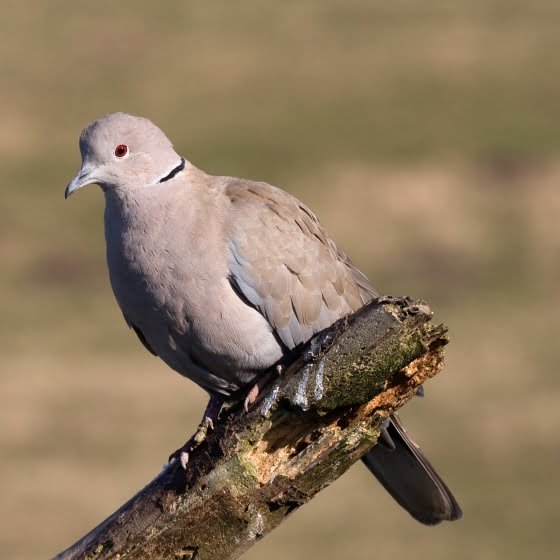
Here’s a concise information chart about the Collared Dove bird:
| Feature | Description |
|---|---|
| Common Name | Collared Dove |
| Scientific Name | Streptopelia decaocto |
| Family | Columbidae |
| Habitat | Urban areas, gardens, parks, agricultural areas, open woodlands |
| Range | Europe, Asia, Africa, introduced to other regions |
| Size | 28-32 cm (11-12.5 inches) |
| Weight | 125-240 grams (4.4-8.5 ounces) |
| Plumage | Pale grayish-brown with a distinctive black collar on the nape |
| Diet | Seeds, grains, fruits, occasionally insects |
| Lifespan | Typically 3-5 years, up to 16 years in captivity |
| Behavior | Often seen perched on rooftops or telephone wires, forms large flocks, melodious cooing calls |
| Breeding Season | Spring to summer |
| Nesting | Builds flimsy nests of twigs in trees or shrubs, often in urban environments |
| Clutch Size | 2 eggs per brood |
| Conservation Status | Least Concern |
The collared dove is a relatively recent addition to Britain’s garden bird population, having spread from Asia and the Middle East in the past century. These pale grey birds with distinctive black collars around their necks are now a common sight in urban and suburban gardens.
12. Wren
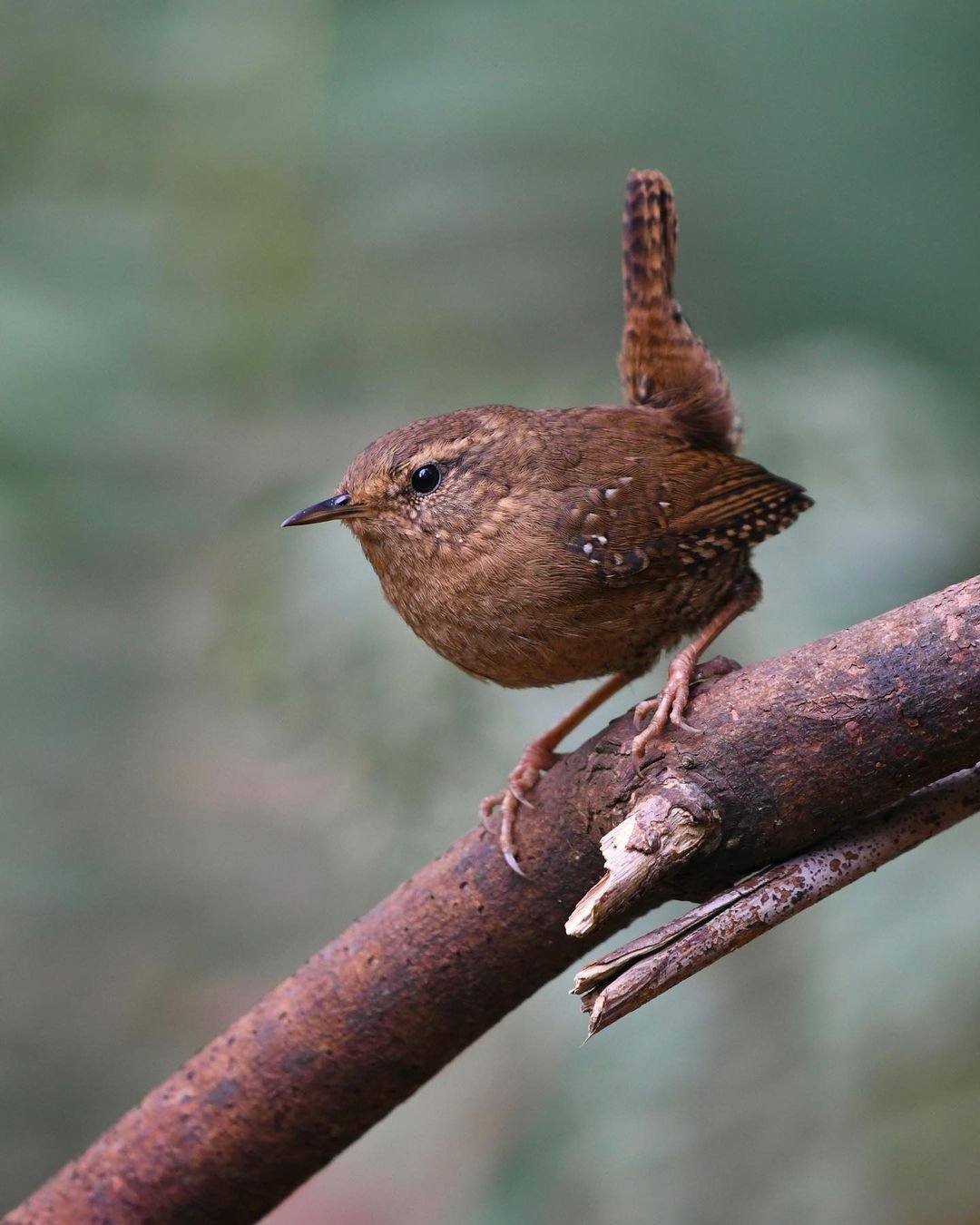
Here’s a concise information chart about the Wren bird:
| Feature | Description |
|---|---|
| Common Name | Wren |
| Scientific Name | Troglodytes troglodytes |
| Family | Troglodytidae |
| Habitat | Woodlands, scrublands, gardens, parks |
| Range | Europe, Asia, Africa, Americas |
| Size | 9-10 cm (3.5-4 inches) |
| Weight | 8-13 grams (0.28-0.46 ounces) |
| Plumage | Brown with darker barring on wings and tail, often with a distinctive cocked tail |
| Diet | Insects, spiders, small invertebrates, seeds |
| Lifespan | Typically 2-3 years, up to 7 years in captivity |
| Behavior | Active and restless, often seen hopping and flitting among vegetation |
| Breeding Season | Spring and summer |
| Nesting | Builds domed nests low to the ground in dense vegetation |
| Clutch Size | 5-8 eggs per brood |
| Conservation Status | Least Concern |
Despite their tiny size, wrens are energetic and vocal little birds that can often be spotted darting in and out of garden shrubbery. Providing dense vegetation, brush piles, or nesting boxes can encourage these delightful songbirds to make your garden their home.
13. Blackcap
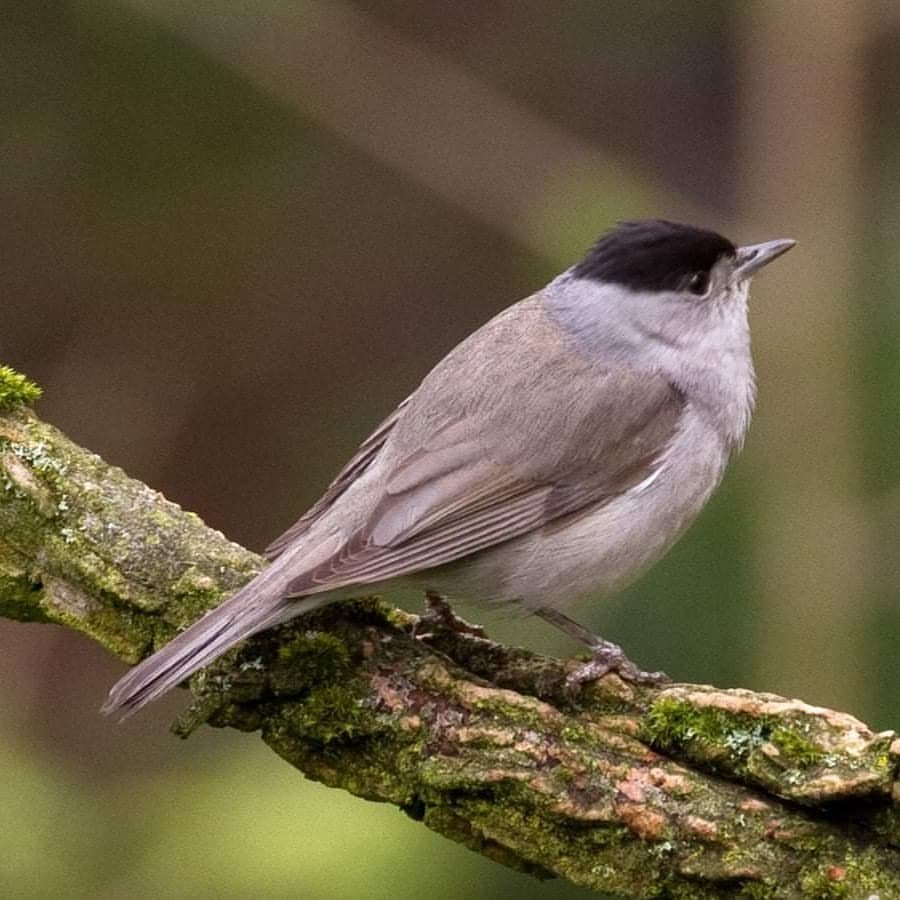
Here’s a concise information chart about the Blackcap bird:
| Feature | Description |
|---|---|
| Common Name | Blackcap |
| Scientific Name | Sylvia atricapilla |
| Family | Sylviidae |
| Habitat | Woodlands, scrublands, gardens, parks |
| Range | Europe, Asia, North Africa |
| Size | 13-15 cm (5.1-5.9 inches) |
| Weight | 14-20 grams (0.5-0.7 ounces) |
| Plumage | Gray-brown upperparts, grayish-white underparts, males have black caps, females have brown caps |
| Diet | Insects, berries, fruits, seeds |
| Lifespan | Typically 2-3 years, up to 9 years in captivity |
| Behavior | Agile and active, often seen foraging in vegetation, migratory birds in many regions |
| Breeding Season | Spring and summer |
| Nesting | Builds cup-shaped nests in shrubs or trees |
| Clutch Size | 4-6 eggs per brood |
| Conservation Status | Least Concern |
The blackcap is a warbler with a distinctive black cap (on males) and grey-brown plumage. These birds are summer visitors to Britain and can be attracted to gardens with fruiting trees and shrubs, as well as sugar-water feeders.
14. Song Thrush

Here’s a concise information chart about the Song Thrush bird:
| Feature | Description |
|---|---|
| Common Name | Song Thrush |
| Scientific Name | Turdus philomelos |
| Family | Turdidae |
| Habitat | Woodlands, gardens, parks, hedgerows |
| Range | Europe, Asia, North Africa |
| Size | 20-24 cm (7.9-9.4 inches) |
| Weight | 70-90 grams (2.5-3.2 ounces) |
| Plumage | Brown upperparts with distinct black spots and streaks, off-white underparts with heavy spotting |
| Diet | Insects, worms, snails, berries, fruits, occasionally small reptiles and amphibians |
| Lifespan | Typically 3-5 years, up to 10 years in captivity |
| Behavior | Forages on the ground, often seen flipping leaves to uncover prey, known for melodious singing |
| Breeding Season | Spring and summer |
| Nesting | Builds cup-shaped nests in trees or shrubs |
| Clutch Size | 3-5 eggs per brood |
| Conservation Status | Least Concern |
Known for their beautiful, melodic songs, song thrushes are medium-sized birds with brown backs, spotted breasts, and yellow beaks. They can often be found foraging for worms, insects, and berries in gardens, especially those with areas of dense vegetation or leaf litter.
15. Greenfinch

Here’s a concise information chart about the Greenfinch bird:
| Feature | Description |
|---|---|
| Common Name | Greenfinch |
| Scientific Name | Chloris chloris |
| Family | Fringillidae |
| Habitat | Woodlands, parks, gardens, farmlands |
| Range | Europe, Asia, North Africa |
| Size | 14-16 cm (5.5-6.3 inches) |
| Weight | 20-32 grams (0.7-1.1 ounces) |
| Plumage | Olive-green with yellow on wings and tail, yellow patches on wings and sides of tail |
| Diet | Seeds, grains, buds, insects |
| Lifespan | Typically 2-3 years, up to 10 years in captivity |
| Behavior | Social, often seen in small flocks, acrobatic flyers, frequent visitors to bird feeders |
| Breeding Season | Spring to summer |
| Nesting | Builds cup-shaped nests in trees or shrubs |
| Clutch Size | 3-6 eggs per brood |
| Conservation Status | Least Concern |
With their distinctive green plumage, yellow wing bars, and streaked breasts, greenfinches are a lovely addition to any garden bird population. These sociable finches enjoy feeding on seeds, berries, and even buds and blossoms, so providing a variety of feeders and plants can attract them.
Tips for Attracting Garden Birds
Now that you’re familiar with some of the most common British garden birds, here are a few tips to help you attract and care for these feathered friends:
- Provide a variety of bird feeders: Different bird species have different feeding preferences, so offering a range of seeds, nuts, suet, and fruit can cater to a diverse array of visitors.
- Install nesting boxes: Putting up nesting boxes in your garden can encourage birds to breed and raise their young in your backyard.
- Create a bird-friendly environment: Plant a variety of trees, shrubs, and flowering plants to provide food, shelter, and nesting sites for birds. Adding a bird bath or water source can also be a big draw.
- Avoid pesticides and herbicides: These chemicals can be harmful to birds and their food sources, so opt for natural, organic gardening methods whenever possible.
- Be patient and observant: It may take some time for birds to discover and become comfortable in your garden. Keep an eye out for their behaviors and adjust your offerings and environment accordingly.
Having a garden filled with the sights and sounds of beautiful British birds is a true joy and privilege. By following these tips and learning to identify and cater to the needs of common garden birds, you can create a welcoming and sustainable haven for these feathered friends. So, grab your binoculars, set up your feeders, and get ready to enjoy the delightful company of these incredible creatures right in your own backyard.
Pingback: Caterpillars: Identification, Damag and Control Methods -
Pingback: 15 British Garden Birds You Can Find in Your Ga...
Pingback: Caterpillars in California: Exploring the Diverse World
Pingback: Beauty of Sambucus: Expert Tips for Thriving Elder Plants
Pingback: Foxglove Flowers: Nature’s Delicate Charm - USA Garden Web
Pingback: Eagleston Holly Trees: Guide to a Lush and Elegant Garden
Pingback: Purple Magic Crapemyrtle: A Gardener’s Favorite Flower Tree
Pingback: Stunning Trees That Start with ‘E’ gardeners school
Pingback: Finches of Michigan: Exploring the Diverse Species
Pingback: Amazing Discoveries: Trees That Start with ‘V’
Pingback: Wonderful Woods: Trees That Start with ‘W’ -
Pingback: Trees That Start with Y: Natural Beauty Explained
Pingback: Amazing Trees that start with ‘M’ - Gardener's School
Pingback: Journey into Greenery : Trees That Begin with J
Pingback: Maple Trees : A Complete Guide to Varieties and Care
Pingback: Sunflowers: Varieties, Planting Tips and Care Techniques
Pingback: Amazing Secrets: Trees That Start with X -
Pingback: Guide to Greatness: Discovering Trees That Start with ‘G’ - Gardener's School
Pingback: Trees That Start with I : Discover Beautiful Nature
Pingback: Trees That Start with B : A Guide to Breathtaking Beauty